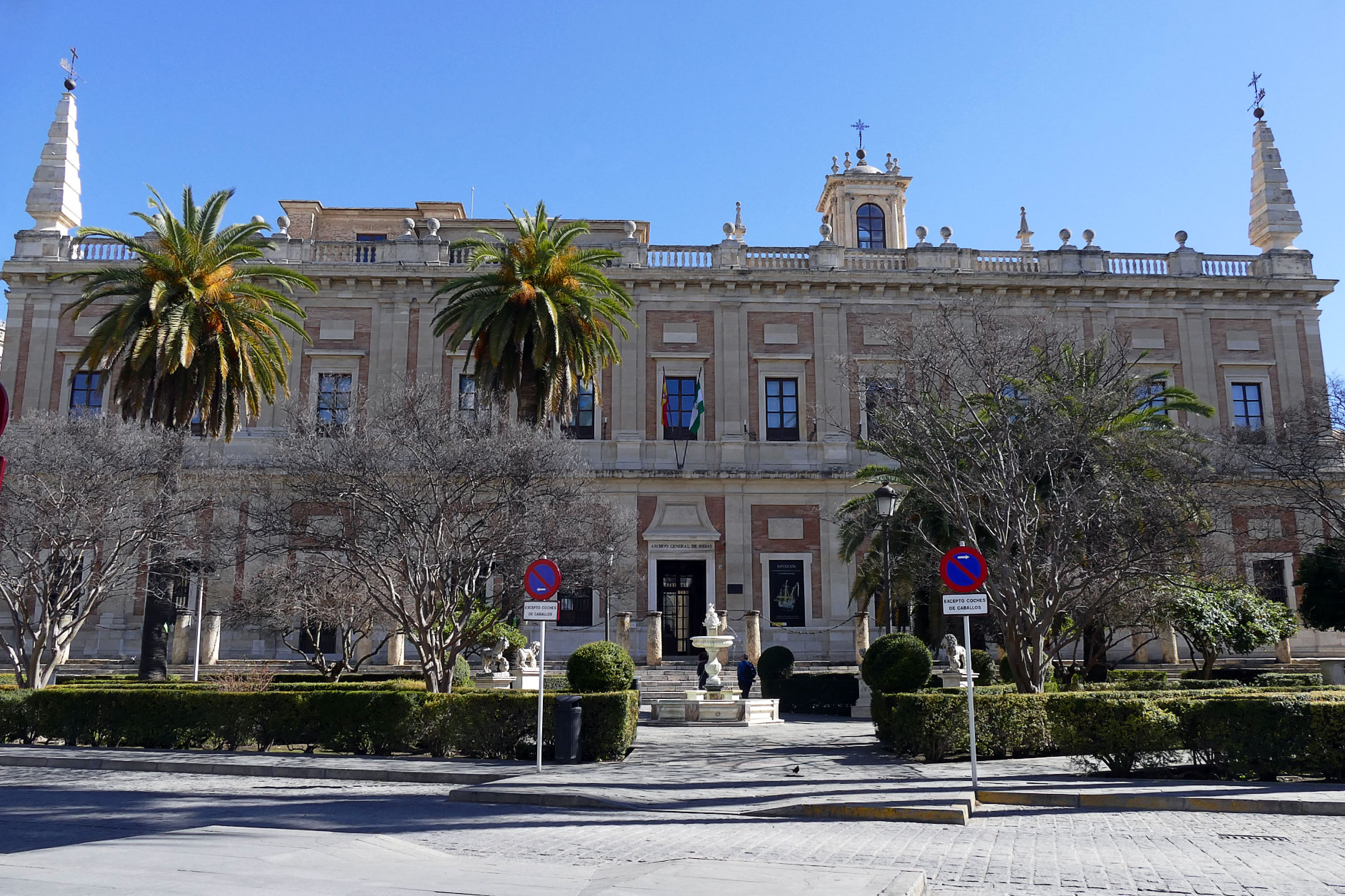
En 1503 se estableció por decreto real la Casa de la Contratación de Indias en Sevilla, creada para fomentar y regular el comercio y la navegación con el Nuevo Mundo, y que asignaba a Sevilla el monopolio del comercio con las Indias. Esta circunstancia actuó, por una parte, como efecto llamada de cuantos comerciantes europeos estaban interesados en este nuevo mercado. Por otro lado, la ciudad que se convertía en «Puerto y puerta de Indias» pasaba a ser también «Archivo de las riquezas del mundo» y, a partir de ahí, «Gran Babilonia de España» y «parte de España más mejor que el todo».

In 1503, a royal decree established the setting up of the Casa de Contratación de Indias (the House of Trade with the Indies) with the aim of encouraging and regulating trade and maritime traffic with the New World, thereby giving Sevilla a monopoly on trade with the Indies. This acted as a magnet for European merchants with an interest in the new market, and the city became the port and gateway to the Indies. It was also referred to as the «archive of the riches of the world» and the «great Baylon of Span», as well as «that part of Spain which is better than all the rest».
Vinieron nuevas gentes y se propagaron entre los personajes más pudientes nuevos gustos llegados de Italia. Por otra parte, en España el Renacimiento no significó una ruptura con la Edad Media, sino una continuación que hizo prevenir el estilo isabelino en el plateresco, luego el purismo y finalmente el herreriano.
Como testimonio de aquella floreciente etapa se conservan hoy casas palacio como la de Pilatos, de Las Dueñas, de la Condesa de Lebrija y de los Pinelo, entre otras; el hospital de la Sangre o de las Cinco Llagas; conventos como el de Santa Inés y monasterios como el de San Clemente, el colegio de San Hermenegildo, así como aportaciones a múltiples edificaciones, sobre todo el campanario y el Giraldillo en la Giralda y el altar mayor de la Catedral. Y claro, el propio edificio consistorial, ejemplo evidente de este estilo plateresco en su fachada de la Plaza de San Francisco.
La Sevilla del siglo XVI, con más de 120.000 habitantes, era una de las ciudades más populosas de Europa y de las más prósperas gracias a los barcos repletos de metales preciosos, productos exóticos e incluso esclavos, y el Alcázar como sede estable de la Casa de la Contratación. Más tarde, la Casa Lonja se convirtió en Archivo de Indias.
The city attracted people from far and wide and new fashions and customs imported from Italy became popular amongst the wealthier classes. However, the Renaissance period in Spain didn’t represent such a radical break with the Middle Ages as elsewhere, but more of a continuation in which the Isabelino and plateresque styles continued to flourish giving way eventually to purism and finally to herreriano.
Examples of this properous period include: palatial houses such as those of Pilatos, Las Dueñas, La Condesa de Lebrija and Los Pinelo; the Hospital de la Sangre or de las Cinco Llagas; convents such as Santa Ines and monasteries such as San Clemente, the San Hermenegildo school; and additions to numerous buildings such as the belfry and Giraldillo on the Giralda tower, and the main altarpiece in the Cathedral. There was also the grand town hall, whose façade facing the Plaza de San Francisco is an excellent example of plateresque style.
With a population of some 120,000 people, 16th century Sevilla was one of the biggest cities in Europe. Judging by the frantic activity in areas like El Arenal, which was busy with the arrival of vessels laden with precious metals, exotic products, and even slaves, and the Alcazar, which at that time acted as the permanet headquarters of the Casa de Contratacion, it also must have been one of the most prosperous. later the Casa Lonja was converted into the Archivo de Indias.
